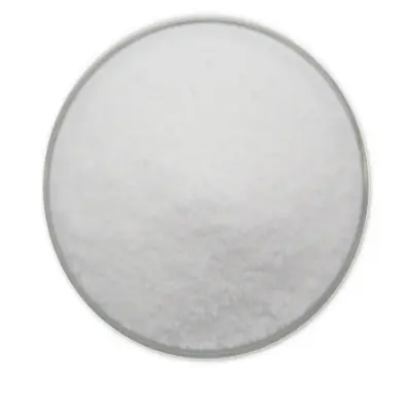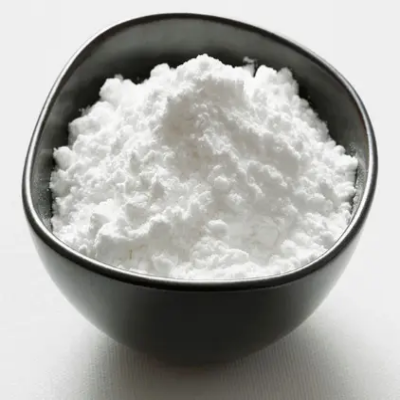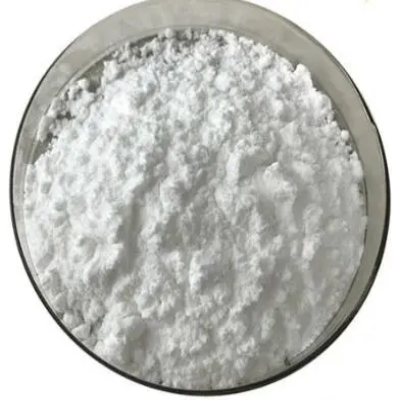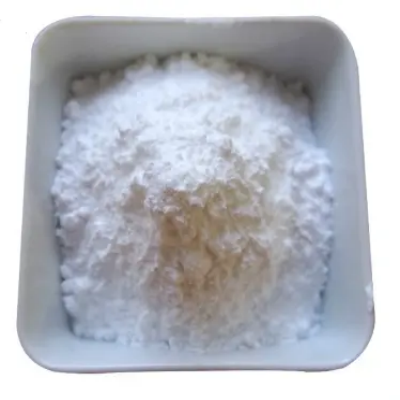-
![N-[(9H-fluoren-9-ylmethoxy)carbonyl]-3-phenyl-L-alanine CAS:35661-40-6](https://cdn.globalso.com/xindaobiotech/2WI17RKBWR11PZUDNLH20.png)
N-[(9H-fluoren-9-ylmethoxy)carbonyl]-3-phenyl-L-alanine CAS:35661-40-6
N-[(9H-fluoren-9-ylmethoxy)carbonyl]-3-phenyl-L-alanine is a chemical compound commonly utilized in peptide synthesis and organic chemistry. This compound serves as a crucial building block for constructing peptides and peptidomimetics, making it an essential reagent in biochemical and pharmaceutical research.
-
![N-[(9H-fluoren-9-ylmethoxy)carbonyl]-L-alanine CAS:35661-39-3](https://cdn.globalso.com/xindaobiotech/CMGYQWFMYMAW61CV3X33.png)
N-[(9H-fluoren-9-ylmethoxy)carbonyl]-L-alanine CAS:35661-39-3
N-[(9H-fluoren-9-ylmethoxy)carbonyl]-L-alanine is a chemical compound commonly used in peptide synthesis and organic chemistry. This compound serves as a crucial building block for the construction of peptides and peptidomimetics, making it an essential reagent in biochemical and pharmaceutical research.
-
![N-[(9H-fluoren-9-ylmethoxy)carbonyl] CAS:29022-11-5](https://cdn.globalso.com/xindaobiotech/1OJ6F_TYCD@73N_152DCY9.png)
N-[(9H-fluoren-9-ylmethoxy)carbonyl] CAS:29022-11-5
N-[(9H-fluoren-9-ylmethoxy)carbonyl] is a chemical moiety commonly utilized in peptide synthesis and organic chemistry. This functional group serves as a critical component for the protection of amino acids during peptide bond formation, playing a pivotal role in the controlled assembly of complex peptides and peptidomimetics.
-

H-p-Nitro-Phe-OMeHCl CAS:17193-40-7
H-p-Nitro-Phe-OMeHCl is a chemical compound, commonly used in peptide synthesis and organic chemistry. This compound consists of p-nitrophenylalanine methyl ester, forming a crucial building block in the creation of complex peptides and related organic molecules.
-
![N-[(9H-fluoren-9-ylmethoxy)carbonyl]-L-leucine CAS:35661-60-0](https://cdn.globalso.com/xindaobiotech/S76J2VEENN5@2_BTD49.png)
N-[(9H-fluoren-9-ylmethoxy)carbonyl]-L-leucine CAS:35661-60-0
N-[(9H-fluoren-9-ylmethoxy)carbonyl]-L-leucine is a chemical compound commonly used in peptide synthesis and organic chemistry. This compound serves as a crucial building block for constructing peptides and peptidomimetics, making it an essential reagent in biochemical and pharmaceutical research.
-

L-Homophenylalanine CAS:943-73-7
L-Homophenylalanine is a non-proteinogenic amino acid, structurally related to phenylalanine. It is commonly used in biochemical and pharmaceutical research due to its unique properties and applications in peptide synthesis and drug development.
-

L-Norvaline CAS:6600-40-4
L-Norvaline is a natural amino acid derivative, which belongs to the family of branched-chain amino acids. It is structurally similar to the amino acid valine, with the distinction of having an additional methyl group on the side chain. L-Norvaline has garnered interest due to its potential biological activities and relevance in various physiological processes, making it a subject of study in fields such as metabolism, biochemistry, and nutrition.
-
![N-[1-(S)-Ethoxycarbonyl-3-phenylpropyl]-L-alanine CAS:82717-96-2](https://cdn.globalso.com/xindaobiotech/VYH6FUCIIBE_I7B6OOPY83.png)
N-[1-(S)-Ethoxycarbonyl-3-phenylpropyl]-L-alanine CAS:82717-96-2
N-[1-(S)-Ethoxycarbonyl-3-phenylpropyl]-L-alanine is a chemical compound belonging to the class of amino acid derivatives. It possesses a unique structure characterized by the presence of an ethoxycarbonyl group and a phenylpropyl moiety, contributing to its diverse properties and potential applications in various fields such as medicinal chemistry and drug development.
-

Fmoc-Thr(tBu)-OH CAS:71989-35-0
Fmoc-Thr(tBu)-OH, also known as Fmoc-protected threonine, is a derivative of the amino acid threonine with the Fmoc (9-fluorenylmethyloxycarbonyl) protecting group on the hydroxyl (OH) functional group. It is commonly used in peptide synthesis to introduce threonine into peptide chains, particularly in solid-phase peptide synthesis due to its stability and compatibility with Fmoc-based chemistry.
-

D-SERINE CAS:312-84-5
D-serine is a non-proteinogenic amino acid serving as a crucial neuromodulator in the central nervous system. It acts as a co-agonist at the glycine site of N-methyl-D-aspartate (NMDA) receptors, playing a significant role in synaptic plasticity, learning, and memory processes. Additionally, it participates in neurodevelopment and various physiological functions, making it a subject of extensive research in the fields of neuroscience, pharmacology, and psychiatry.
-

boc-N-methyl-L-alanine CAS:16948-16-6
boc-N-methyl-L-alanine, a derivative of the amino acid alanine, is a compound commonly utilized in peptide synthesis and organic chemistry. Its structure incorporates a tert-butoxycarbonyl (BOC) protective group and a methyl group, contributing to its significance as a versatile building block in chemical reactions and the creation of complex peptide structures.
-

boc-L-homophenylalanine CAS:100564-78-1
boc-L-homophenylalanine is a chemical compound commonly utilized in peptide synthesis and organic chemistry. This compound serves as an essential building block for constructing peptides and peptidomimetics, making it a valuable reagent in biochemical and pharmaceutical research.

